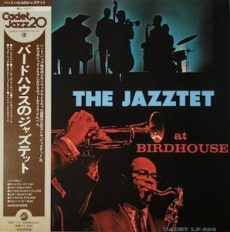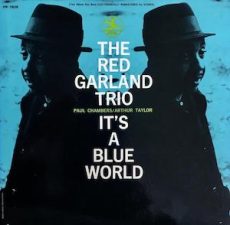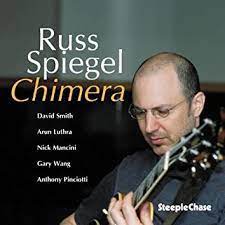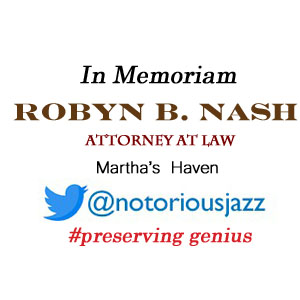
Daily Dose Of Jazz…
Kenn Smith was born Kenneth Lamont Smith on April 27, 1962 in Chicago, Illinois.
As a child of the 60s and Seventies living on the WestSide of his hometownhe first heard the sounds of Motown, Soul, Funk, Country, Jazz and Rock. His school was shows like Hee Haw and Midnight Special, his parents’ record collection, and a neighborhood filled with amateur and professional musicians.
When the family moved to the SouthSide in 1975, Smith began his guitar studies at age 13 with a visit to the local music store purchasing two Mel Bay books. Three years later the family moved to the western suburbs of Maywood, Illinois. At 16 he began classical guitar studies with guitarist Bruce Walters, and later continued studies at Jack Cecchini Studio.
While attending Proviso East High School, he played electric and classical guitar as well as timpani in the Proviso Township Orchestra, electric guitar and bass in the Proviso East High School jazz band, where he received the Louis Armstrong Award for Outstanding Jazz Improvisation during his senior year.
1982 saw Kenn beginning his career teaching guitar at Robinson’s Music Academy in Maywood, as well as performing with local funk and fusion bands. This he did while attending Columbia College of Chicago, studying music management and production. In 1987 he enrolled at the American Conservatory of Music where he studied jazz guitar and composition. In between those years of teaching, performing and study, he became an avid fan of progressive rock and fusion, developing skills as a guitarist, bassist and composer.
In 1986, he began his career as a freelance guitarist and bassist, performing on Chicago’s jazz, blues and rock scene. But it wasn’t till 1989 his professional career took off, working as a guitarist at the Chicago Cotton Club. It was here he later formed his first jazz trio and opened for jazz greats Shirley Horn, Stanley Turrentine, Freddy Cole, and Art Porter. As a jazz side man he played with other jazz greats, Jodie Christian, Guy Fricano, Johnny Frigo, Bobby Broom, Najee and many others.
He would go on tour with the Chi-Lites, start his own label Kenn Smith Music, has written, produced and recorded eight albums, as well as authored an instruction book for electric bass and numerous articles for online magazines such as Mel Bay Bass Sessions, and Bass Musician Magazine.
Guitarist, bassist, composer, educator and journalist Kenn Smith, who is well versed in many styles of music, continues to explore his music.
More Posts: author,bass,composer,educator,guitar,history,instrumental,jazz,music

Requisites
The Jazztet At Birdhouse ~ The Jazztet | By Eddie Carter
This morning’s subject is a recent addition to my library by The Jazztet. The group was co-founded by Art Farmer and Benny Golson in 1959. The Jazztet At Birdhouse (Argo LP 688/LPS 688) is a 1961 live release documenting the sextet’s performance at the Chicago jazz club. It was their first live album and their fourth as an ensemble. The first three are Meet The Jazztet (1960), Big City Sounds, and The Jazztet and John Lewis (1961). The personnel is Art Farmer on flugelhorn (tracks: A3, B2), trumpet (A1, A2, B1 to B3), Thomas McIntosh on trombone, Benny Golson on tenor sax, Cedar Walton on piano, Thomas Williams on bass, and Albert Heath on drums. My copy is the 1975 Japanese Stereo Reissue (Cadet MJ-1011) by Victor Musical Industries.
Side One opens with Junction by Benny Golson, beginning leisurely with the sextet’s collective melody. The saxophonist begins the first reading comfortably, then gradually builds to an aggressive conclusion. Art takes over and is equally effective in the second statement, with the front line complimenting him ahead of the theme’s restatement and finale. The ensemble presses the pedal to the floor in the uptempo cooker, Farmer’s Market. They quickly begin the melody in unison, stepping aside for Benny, who blows fire in the opening solo. Art swings rapidly into the second reading, then Albert illustrates his energetic brushwork briefly. Cedar vigorously delivers the song’s final solo before the sextet reconvenes to end the song abruptly.
Art puts the flugelhorn to work on the jazz standard, Darn That Dream, by Jimmy Van Heusen and Eddie De Lange. He makes the song his own with a tender rendition of the theme. As the song’s only soloist, he gives an elegant interpretation supported gently by the front line preceding a peaceful finale. The pace picks up again to start Side Two with Shutterbug by J.J. Johnson. The song flies fast from the opening notes of the sextet’s vigorous melody. Art’s back on trumpet for the opening solo, and he’s going at breakneck speed. Benny follows him furiously in the second interpretation, then Albert applies the finishing touches with enthusiastically agile brushwork leading to an exuberant ending.
Art returns to the flugelhorn for a gorgeous rendition of ‘Round Midnight by Thelonious Monk, Bernie Hanighen, and Cootie Williams. The jazz standard receives a regal treatment beginning with the flugelhorn leading the front line through the melody. Benny joins in briefly; then, the ensemble sets the scene for Golson to give a hauntingly beautiful statement. Art is up next and switches to the trumpet for a tender performance. Cedar indulges in a bit of nostalgia in the closer leading to the climax. Thomas McIntosh’s November Afternoon starts with the sextet’s lively theme. Art takes the lead with a vibrant opening statement; then, Tom cooks briefly on his only interpretation. Benny gets the spotlight last with an exceptionally satisfying reading preceding the group’s exit.
Kay Norton, the group’s manager, produced The Jazztet at Birdhouse, and Ron Malo was behind the dials of the recording. This album highlights Benny Golson’s capabilities as an arranger; he arranged all the tunes except November Afternoon, which was arranged by Thomas McIntosh. The sound quality is good for the period, and the band’s exhilarating energy comes through on every track. The Jazztet at Birdhouse is a lesser-known album in their discography, but an overlooked gem deserving broader recognition and should be considered the next time you’re vinyl shopping. It should also be a welcome addition to any jazz library, especially if you enjoy excellent Hard-Bop or are an Art Farmer and Benny Golson fan!
~ Big City Sounds (Argo LP 672/LPS 672), Meet The Jazztet (Argo LP 664/LPS 664), The Jazztet and John Lewis (Argo LP 684/LPS 684) – Source: Discogs.com ~ Darn That Dream, ‘Round Midnight – Source: JazzStandards.com © 2023 by Edward Thomas Carter
More Posts: choice,classic,collectible,collector,history,instrumental,jazz,music,saxophone,trumpet

Requisites
It’s A Blue World ~ The Red Garland Trio | By Eddie Carter
The Red Garland Trio enters the spotlight to begin this discussion with It’s A Blue World (Prestige PRLP 7838/PRST 7838), an excellent 1958 trio session that didn’t hit the stores until 1970. It was Red’s tenth release for Bob Weinstock’s label, and he’s working with a stellar rhythm section, Paul Chambers on bass, and Arthur Taylor on drums. My copy is the 1972 US Stereo reissue (Prestige PRT-7838). Side One starts with This Can’t Be Love by Richard Rodgers and Lorenz Hart from the 1938 musical, The Boys From Syracuse. The trio opens the song at a medium tempo with the pianist’s light touch stating a charming melody. Paul goes first and takes a pleasant walk with the bass; then Red entertains us with a highly satisfying reading while Art’s brushwork keeps them moving into the reprise and close.
The pace slows slightly for Buddy Johnson’s beautiful ballad Since I Fell For You. The album’s longest song allows Garland and the rhythm section a broader canvas on which to work as they cruise through the theme. Red opens with a relaxing interpretation as enjoyable as a day at the beach, and Paul takes a carefree stroll in the closing solo preceding the climax. Crazy Rhythm by Irving Caesar, Joseph Meyer, and Roger Wolfe Kahn begins Side Two at a lively tempo for the trio’s melody. It comes from the musical, Here’s Howe and was initially heard on his 1962 album, Dig It! Red’s opening solo is full of energy, then Paul has a few crisp choruses next, and Art delivers a stirring performance preceding the finale.
In their rendition of the jazz standard, Teach Me Tonight, by Gene De Paul and Sammy Cahn, the trio offers the listener a delightful treat. Garland leads off with a delicately tender opening chorus into a graceful interpretation. Chambers follows with an exquisitely beautiful solo, and then Red returns for a few final thoughts just before the theme’s restatement and a quiet ending. It’s A Blue World by Robert Wright, and George Forrest picks up the pace one final time and closes the album on an upbeat note. The mood is jubilant from the opening notes of the melody. Red starts the solos with a vibrant performance, then steps aside for Paul to walk briskly. Art shares the finale with Red in a lively conversation ahead of the closing chorus.
Bob Weinstock supervised It’s A Blue World, and Rudy Van Gelder was behind the dials of the recording. Despite the album’s stereo being electronically remastered, it’s a solid recording with a splendid soundstage that emerges from your speakers vibrantly. If you’re a fan of Red Garland and enjoy jazz piano trios, as I do, I invite you to consider It’s A Blue World on your next vinyl shopping trip. It’s an excellent album, perfect for listening to any time of day or evening, and it should also make an excellent addition to any jazz library!
~ Dig It! (Prestige PRLP 7229/PRST 7229) – Source: Discogs.com ~ Crazy Rhythm, Since I Fell For You, This Can’t Be Love – Source: JazzStandards.com ~ Teach Me Tonight – Source: Wikipedia.org © 2023 by Edward Thomas Carter
More Posts: choice,classic,collectible,collector,history,instrumental,jazz,music,piano

Daily Dose Of Jazz…
Russ Spiegel was born March 30, 1962 in Los Angeles, California, and raised in Santa Monica, California. His family was musical as he has an older sister who plays the bluegrass fiddle, a pianist and composer brother and a father who is an avid amateur jazz trumpeter.
A fan of pop radio as a youngster, Russ discovered rock music as he entered his teens. Picking up the electric guitar he took lessons at a local music store, eventually buying a Fender Stratocaster. He started jamming with area musicians, which led to forming a rock cover band. Finishing high school in Frankfurt, Germany he enrolled in the University of Maryland that had a campus in Munich, Germany. While there, he formed a progressive-rock band, joined a local R&B and soul unit, and began learning jazz standards. In 1982 Spiegel returned to the U.S. to complete his bachelor’s degree at the University of Michigan, in Ann Arbor, earning a degree in philosophy.
In 1986 had Spiegel in Boston, Massachusetts on scholarship at Berklee College of Music. Upon completion of his studies, he relocated to Germany in 1988 where he gradually made contacts in the music world. He began playing on military bases and at local jazz clubs and festivals. During a stint in Paris, France he formed a quartet called Guitar Hell, which toured widely in France and Germany. He soon found himself in demand as a guitarist and electric bassist with various European big bands, jazz ensembles, and blues groups.
Around the same time, Russ joined the band of German jazz organist Barbara Dennerlein and toured Europe with her before receiving the coveted Jazz Scholarship by the city of Frankfurt for his contributions to the city’s artistic scene.
In 2001 Spiegel returned to the U.S. settled in New York City and studied under teachers Adam Rogers, Paul Bollenback, Ben Monder and John Patitucci, receiving his master’s degree in jazz performance from the City College of New York.
In 2008 his Jazz/North Indian classical fusion ensemble, Sundar Shor, undertook a tour of India under the auspices of the American Center, and it has toured widely in Europe as well. Guitarist Russ Spiegel continues to perform and record.
More Posts: bandleader,guitar,history,instrumental,jazz,music

Daily Dose Of Jazz…
Lance Bryant was born on March 23, 1961 in Markham, Illinois. His early musical experience was in the Baptist church. He received his formal education at Berklee College of Music in Boston, Massachusetts where he studied saxophone composition and arranging. Moving to New York City in the mid Eighties he continued his study of saxophone and arranging privately with Frank Foster.
In the Nineties he began his relationship with the Lionel Hampton Orchestra and three years later became the orchestra’s musical director and principal arranger. He made his film debut in Spike Lee’s Malcolm X. He traveled extensively with Phyllis Hyman, Jon Hendricks, Pete “LaRocca” Sims, Wallace Roney, Abdullah Ibrahim, Bootsy Collins,James Williams and numerous others. He was an on-stage musician for the Broadway musical review Swing, has recorded with Carla Cook, George Gee, Yoron Israel.
Returning to his church roots he became Director of Instrumental Music at Fountain Baptist Church, Minister of Music for Andover Baptist Church and released Psalm in 2002, his first of a four cd series of originals and jazz arrangements of hymns and spirituals. As an educator he has taught Covenant Christian Academy, Phillips Academy, his alma mater Berklee, and Jazz At Lincoln Center’s Educational Department.
Saxophonist, arranger and vocalist Lance Bryant when not touring with Abdullah Ibrahim and Ekaya, he continues to perform around New York and New Jersey with Andy Farber Orchestra and the New Lionel Hampton Big Band.
More Posts: arranger,history,instrumental,jazz,music,saxophone,vocal




